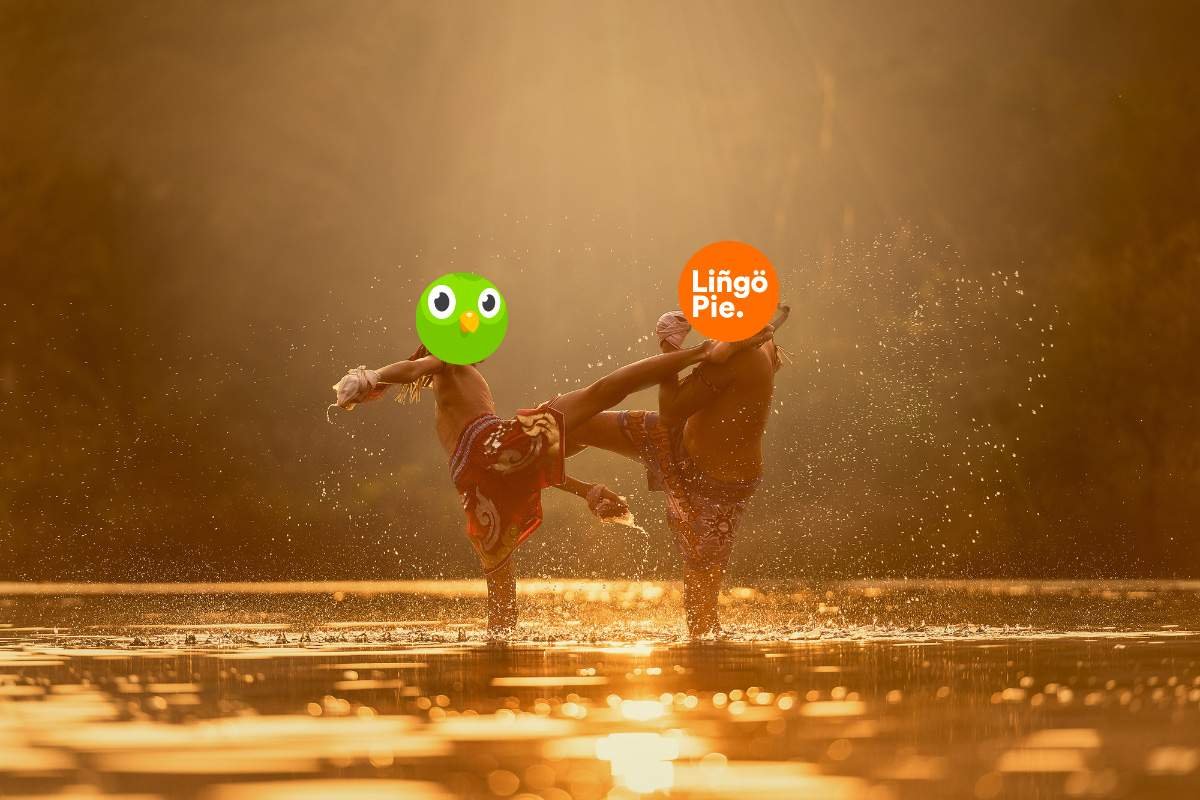Lingopie x Duolingo: Learning languages by watching or repeating every line?
Have you ever felt that strong desire to learn a new language, but when you saw a pile of books or a tape recorder (as when you were at school), you lost all the enthusiasm?
Today we are living intensely, and we also want to learn in that way. If learning a new language (either for leisure, travel, or work) required us to spend two years sitting down and taking courses, we would quickly lose the inspiration to do it.
For sure, there is nothing more fun and interesting than learning new languages to connect with people, places, and cultures, and, for this purpose, interactive tools seem to be the best solution.
Learning languages opens endless doors
In these globalized days, the world has become more and more connected; borders have lost relevance, and the interest of others is growing daily. We are constantly expanding and growing by connecting with others and their cultures.
The possibility of discovering different lifestyles, habits, and personalities that fit better on us allows our internal baggage to expand exponentially. What happens when language is a boundary? Although we always find ways to communicate with those we wish to establish strong bonds with, speaking different languages continues to be a “thing” that splits people.
For all this, and a few more reasons, we all should learn at least one new language. Once we open this door, we open a world of possibilities: new people start coming to us, and we are marveled at meeting new cultures. To summarize, a new life is born.
The apps world and their connection with language learning
The greatest possibilities that this digital world brings us (with its advantages and disadvantages) is to build brick-by-brick our network and use multiple and efficient tools for whatever we want. If there is something that can’t be missed in this digital world the language learning apps.
We can name several of them, but our focus would be on two: Lingopie and Duolingo.
These tools aim at language learning in a funny, original, and innovative way. The great thing is that they have different styles. If you decide to use both, you can complement your learning process by using them at the same time.
Tips for learning languages through the digital world
The cool point in the digital is having access to everything with a click, you can find multiple and original methods for language learning. First of all, research what fits better for you, and find ways that match your preferences and personality; I am sure that you will be surprised by the number of tools that you will find available out there.
Before subscribing to any company, I recommend investigating what you can do to boost your understanding. If you are a visual person, go to Lingopie, but if you want to get some grammar, Duolingo would be your best friend.
From my perspective, the most important thing is to use these tools as a complement to learning better.
I love Lingopie because it allows learning languages by watching TV or listening to music. This fantastic platform aims not only to learn a few essential words but to connect more deeply with the cultures of the target countries where the shows are based.
This platform includes series, movies, and documentaries from different countries. If, for example, you want to learn Spanish and would like to visit Spain or Argentina, you can search for shows from these countries and compare the phonetics and pronunciations of these regions to understand their differences.
But not only that, but you can also begin to recognize each country’s behaviors and routines, habits, and peculiarities. You will see how each place has its own specific ways of living.
Duolingo’s goal is to learn languages through games and repetitions. I think it is a useful tool for those who are having their first contact with the language because it allows you to learn the basic words of each language and repeat these words until you integrate them.
Since the purpose of this platform is to learn languages through games, it invites you to repeat words by listening, writing, or reading, so you can move to the next level, in order to go further to more complex terms.
On the other hand, Lingopie also allows you to learn word by word and even has cool features available, like practicing pronunciation until you incorporate phonetics. In addition, the entertaining thing is that here also comes a chance to learn in a ludic way, with the bonus of discovering the culture, and even connecting with other people who are in the same process as you.
How can I meet other people who are in the same boat as I am?
Lingopie has Open Conversation or Grammar Classes for those who want to improve their speaking skills; if you miss a dynamic class with a teacher guided by the target language nuances, you will love what they do. It’s great because you can learn completely self-taught, but then, you can expand your knowledge by sharing these lessons with people from different countries. This a huge opportunity to mix the real world with the digital.
If that’s not enough for you, don’t miss the chance to meet Lingopie’s native teachers and take private lessons, which is a point Duolingo misses.
Final thoughts
This world we live in can become more enjoyable every day depending on how we approach it, and language learning can adopt new and exciting outcomes.
It would be great if we could make it happen on that big trip we’ve been planning forever, or at least visit those places we’ve always romanced about.
Getting into new cultures will make you grow. A personal observation, once your curiosity is aroused, you will find it hard to turn back to your old life. That is why it is very important to take advantage of all those tools that are available for us to connect with the cultures we aim for, when ready we can explore the world full of new skills.
Gaming, music, and TV are part of our daily lives, and it would be great to take advantage of them to onboard new horizons.
Bis bald!
Steffie
——
* This article contains sponsored content.
Hi there, I'm Stefanie, the author of the blog post you're reading.
Please support my work!
Search blog


